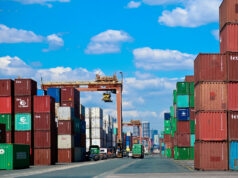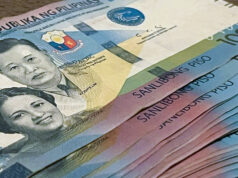PHL trade may benefit from easing restrictions
By Jenina P. Ibañez, Reporter
PHILIPPINE TRADE is seen to gradually benefit from easing restrictions from the world’s largest economies, after steep declines in global trade were somewhat tempered by government responses to contain the pandemic.
The World Trade Organization (WTO) in a report released on June 23 said initial estimates saw global merchandise trade fall by 18.5% year on year in the second quarter of 2020, which it described as a historically large decline albeit below the worst-case scenario of 32% for the year.
WTO said containment efforts like physical distancing and restrictions on transport are now being relaxed, with global commercial flights rebounding by 58% in mid-June after falling 74% between January to mid-April. Container port throughput, it said, also saw partial recovery.
“The fall in trade we are now seeing is historically large — in fact, it would be the steepest on record. But there is an important silver lining here: it could have been much worse,” WTO Director General Roberto Azevêdo said.
“This is genuinely positive news but we cannot afford to be complacent. Policy decisions have been critical in softening the ongoing blow to output and trade, and they will continue to play an important role in determining the pace of economic recovery. For output and trade to rebound strongly in 2021, fiscal, monetary, and trade policies will all need to keep pulling in the same direction.”
Rizal Commercial Banking Corp. Economist Michael L. Ricafort in a mobile message said Philippine trade may benefit, at least in tempered declines in exports and imports, as its major trading partners apply rapid and wide-scale stimulus measures and monetary policy or quantitative easing measures.
“The world’s biggest economies especially the central banks of the US, Europe, and Japan that pledged unlimited/open-ended amounts of liquidity/credit into their respective economies that sharply reduced borrowing costs that stimulate greater demand for loans that spur more investments, create more jobs, and generate more business/economic activities, thereby cushioning/mitigating the adverse economic impact of the COVID-19 pandemic/lockdowns,” he said.
Mr. Ricafort added the reopening of the economies of the Philippines’ major trading partners could lead to gradual improvement in Philippine exports and imports in the coming months, unless there is a new wave of coronavirus disease 2019 (COVID-19) infections that could lead to renewed lockdowns.
Trade recovery would remain gradual, he noted, while restrictions to help prevent the spread of COVID-19 remain and until or unless a vaccine or cure is developed.
“Locally, the sharp cut in local policy rates and the reduction in banks’ reserve requirements in recent months, alongside with other liquidity and other regulatory relief measures that further encourage/incentivize lending activities by banks may still have positive impact on local importers and exporters especially in the coming months,” Mr. Ricafort said.
Preliminary data from the Philippine Statistics Authority found that merchandise exports plummeted by 50.8% to $2.78 billion in April, compared to a 24.7% decline in March. Merchandise fell by 65.3% to $3.28 billion in April, after a 26.2% decline in March.
For the January to April period, exports dropped 16.7% to $18.52 billion, well below the four-percent drop expected this year by the Development Budget Coordination Committee (DBCC). The import bill fell by 27% to $26.54 billion on a cumulative basis against the DBCC’s target of a 5.5% contraction for the year.
According to ING Bank N.V. Manila Senior Economist Nicholas Antonio T. Mapa, the country’s lockdown translated to unfulfilled export and import orders. Trade recovery may take time, he added.
“Now that the Philippine economy is slowly reopening and the global economy doing the same, global trade may bounce back but given the scars left by the lockdowns and the pandemic, it may take a couple of quarters before economic activity return to pre-COVID-19 levels,” he said in an e-mail.
UnionBank of the Philippines Chief Economist Ruben Carlo O. Asuncion expects a slow recovery as global economies try to reopen, with Vietnam in the lead after it had effectively dealt with containing the virus. He said that Philippine fiscal policy needs to be improved.
“Monetary policy has been more than what was expected, and the government’s efforts at virus containment is very critical for economic recovery, including trade prospects,” Mr. Asuncion said in an e-mail.
Noting a three percent decline in the first quarter, WTO said global trade would need to grow 2.5% per quarter to reach the optimistic scenario of a 13% contraction for 2020.
“However, looking ahead to 2021, adverse developments, including a second wave of COVID-19 outbreaks, weaker-than-expected economic growth, or widespread recourse to trade restrictions, could see trade expansion fall short of earlier projections,” the WTO said.



